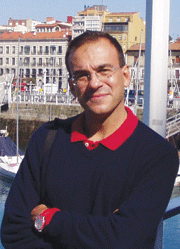E-Archive
Shot Peening in the Automotive Industry
in Vol. 19 - March Issue - Year 2018
Shot Peening And Allied Processes In The Automotive Industry

Mario Guagliano
Shot peening can be considered as the father of many other processes that are based on the same physics but utilize different media. In other words, we know that shot peening is based on small shots impacting a metal part with a kinetic energy able to induce non-uniform deformation of the surface layer of material and, with it, the generation of a system of residual (self) stresses, compressive close to the surface and then tensile toward the core. Since the stresses are self-balanced and the compressed layer is thin, it means that the compressive residual stresses are high near the surface with a well-known beneficial effect on the fatigue strength including the following: (fretting, stress-corrosion, contact fatigue are also positively influenced by shot peening).
But residual stresses are not the only effect due to shot peening; the microstructure is also changed and the surface layer of material is work-hardened while the roughness is also affected by the treatment: all these factors influence the final result of the treatment.
After shot peening, other treatments were developed with the same aim and still based on the non-uniform plastic deformation of the surface layer. One of them is ultrasonic shot peening, where the treated part is put in a closed box and the media is a relatively small number of shot material moved by a piezoelectric ultrasonic actuator that randomly impact the surface many times. In this case, the shots can be larger than the ones used in shot peening and the compressive residual stress field can be deeper, while the surface finishing is generally smoother than the shot-peened surfaces.
Cavitation peening is another impact process: in this case the treatment is shot-less and the impact energy is provided by the physical phenomenon of cavitation, the formation and subsequent implosion of vapour bubbles in a liquid resulting from rapid pressure changes following the dynamic contact of the liquid flow against the surface. Also in this case the result is a deeper residual stress field and a smoother surface, factors that make it possible to increase the fatigue strength and life more remarkably with respect to shot peening.
Other treatments could be cited: flap peening; burnishing and needle peening, claimed as more beneficial than shot peening; laser peening, even better if we look at the stress-cycle (S-N) curves published in promotional papers.
Indeed, the improvement can be so remarkable that personnel working in the automotive sector for a car manufacturer, after having listened to a presentation with an approximate comparison among some of these treatments, asked me why not apply alternative processes instead of shot peening also in the automotive field. First of all, let me say that in many cases, the comparison is not so clear: the reported S-N curve is called "shot-peened" without mentioning the treatment parameters and media, so without knowing if these latter are the optimized ones. But this is not the problem.
Shot peening is generally performed with air-compressed devices or wheel devices. While the first are generally preferred in the aerospace industry, where the accuracy is more important than the productivity, the second type of machines is more used in automotive fields where the production rate is a key factor for success. And this is the point: apart from special cases, it is not easy to imagine reaching the same production rates with processes other than conventional shot peening, no matter whether other treatments are able to guarantee higher compressive residual stresses and finer surface roughness. The cycle of shot peening is still the most efficient and makes it still the most suitable and attractive process to improve the mechanical properties of machine elements in cars. The so called "allied treatments" can be better for special applications or in other fields, where speeding up the production is not the most important issue and other factors must be considered before the final choice. This is what I told those guys.
Shot Peening in the Automotive Industry
by Mario Guagliano
Contributing Editor MFN and
Full Professor of Technical University of Milan
20156 Milan, Italy
E-mail: mario@mfn.li



























